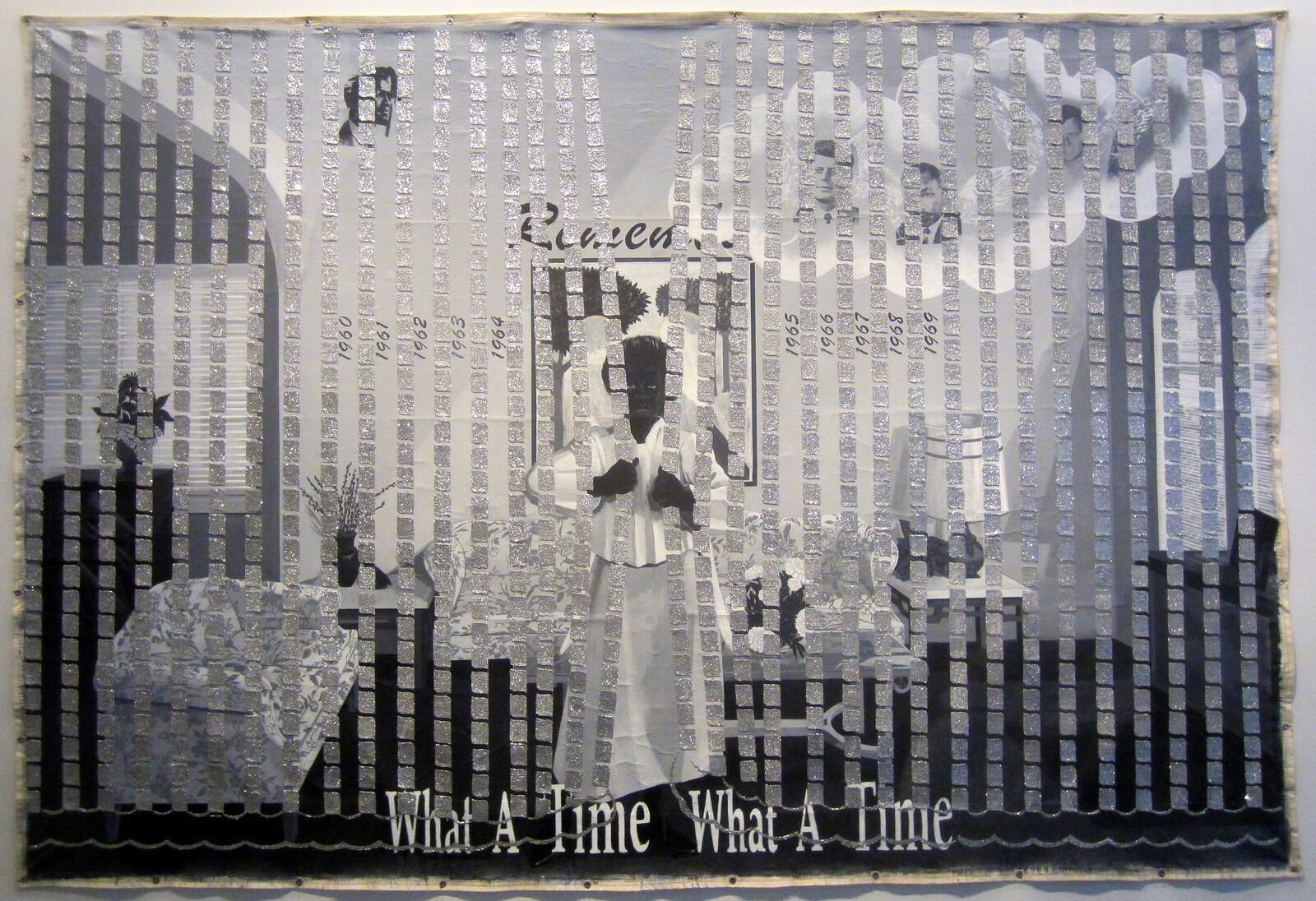February 17–June 6, 2021
The New Museum presents Grief and Grievance: Art and Mourning in America, an exhibition originally conceived by Okwui Enwezor (1963-2019) for the New Museum, and presented with curatorial support from advisors Naomi Beckwith, Massimiliano Gioni, Glenn Ligon, and Mark Nash. Grief and Grievance is an intergenerational exhibition, bringing together 37 artists working in a variety of mediums who have addressed the concept of mourning, commemoration, and loss as a direct response to the national emergency of racist violence experienced by Black communities across America. The exhibition further considers the intertwined phenomena of Black grief and a politically orchestrated white grievance, as each structures and defines contemporary American social and political life. Included in Grief and Grievance are works encompassing video, painting, sculpture, installation, photography, sound, and performance made in the last decade, along with several key historical works and a series of new commissions created in response to the concept of the exhibition.
The artists on view include: Terry Adkins, Jean-Michel Basquiat, Kevin Beasley, Dawoud Bey, Mark Bradford, Garrett Bradley, Melvin Edwards, LaToya Ruby Frazier, Charles Gaines, Ellen Gallagher, Theaster Gates, Arthur Jafa, Daniel LaRue Johnson, Rashid Johnson, Jennie C. Jones, Kahlil Joseph, Deana Lawson, Simone Leigh, Glenn Ligon, Kerry James Marshall, Tiona Nekkia McClodden, Julie Mehretu, Okwui Okpokwasili, Adam Pendleton, Julia Phillips, Howardena Pindell, Cameron Rowland, Lorna Simpson, Sable Elyse Smith, Tyshawn Sorey, Diamond Stingily, Henry Taylor, Hank Willis Thomas, Kara Walker, Nari Ward, Carrie Mae Weems, and Jack Whitten.
Within Grief and Grievance, mourning can be seen as a distinct form of politics, one that refuses a singular melancholy in favor of multifaceted forms of critique, resistance, and care. As Enwezor wrote in his initial narrative for the exhibition in 2018, “with the media’s normalization of white nationalism, the last two years have made clear that there is a new urgency to assess the role that artists, through works of art, have played to illuminate the searing contours of the American body politic.” In Enwezor’s view, the works in this exhibition help illustrate the idea that mourning is a practice that permeates the social, economic, and emotional realities of Black life in America as it is experienced across the country by multiple generations of individuals, families, and communities.
Comprising all three main exhibition floors of the New Museum, as well as the Museum’s Lobby gallery, South gallery, and public spaces, the works included in the exhibition represent cross-disciplinary approaches that incorporate methods of documentary film and photography, experimental filmmaking, performance, and social engagement alongside painting, drawing, and sculpture. The exhibition comprises diverse examples of artists exploring American history from the civil rights movement of the 1960s to issues of police violence in the United States in the 1990s and today, as many of the participating artists reflect on the intersection of historical memory and the social and political realities of the present.
Although the overlapping themes of the exhibition are woven throughout the exhibition, each gallery floor builds off one of three historical cornerstones that link the experience of mourning to moments of political action and engagement across American history: Jack Whitten’s Birmingham (1964), Daniel LaRue Johnson’s Freedom Now, Number 1 (1963–64), and Jean-Michel Basquiat’s Procession (1986). The presence of performance and music as spaces for community mourning and remembrance, as seen in the works of artists and performers including Rashid Johnson, Okwui Okpokwasili, and Tyshawn Sorey, has also been vital to the conception of the exhibition.
Another key theme visible throughout the exhibition is the use of abstraction as a strategy for confronting or mediating moments of historical violence or social upheaval, as in the contributions of artists such as Mark Bradford, Ellen Gallagher, Jennie C. Jones, and Julie Mehretu. In the wake of the Black Lives Matter movement, intensified discussions about the circulation of images of racial violence, death, and mourning in the digital age have also figured into the work of younger artists across a variety of forms. Many artists working today have built upon a tradition of confronting media representations of institutional violence and commensurate protest movements.
One important aspect of realizing Enwezor’s vision for the exhibition is the inclusion of Glenn Ligon’s major public work A Small Band (2015), which Enwezor had commissioned for his Venice Biennale in 2015 and which will be making its New York premiere across the façade of the New Museum thanks to the collaboration of the Virginia Museum of Fine Arts.
The exhibition is joined by a wide range of conversations with artists from the exhibition, including: Theaster Gates in conversation with Massimiliano Gioni on February 25; Melvin Edwards in conversation with Massimiliano Gioni on March 2; LaToya Ruby Frazier in conversation with Margot Norton on March 12; Kerry James Marshall in conversation with Massimiliano Gioni on March 18; Dawoud Bey in conversation with Gary Carrion-Murayari on March 23; Adam Pendleton in conversation with Andrew An Westover on April 1; Hank Willis Thomas in conversation with Margot Norton on April 8; Rashid Johnson in conversation with Massimiliano Gioni on April 15; Tiona Nekkia McClodden in conversation with Margot Norton on May 3; with more to be announced.
On February 24, the Museum will host “Workshop for Educators: Grief and Grievance: Art and Morning in America.” Designed for K-12 educators, this program will highlight and contextualize works in the exhibition with historic and contemporary social movements, and artists’ concerns today.
To respect Enwezor’s wishes for the exhibition to coincide with the 2020 US presidential election, the exhibition catalogue published with Phaidon has been released ahead of the exhibition opening, and includes contributions from Elizabeth Alexander, Naomi Beckwith, Judith Butler, Ta-Nehisi Coates, Okwui Enwezor, Massimiliano Gioni, Saidiya Hartman, Juliet Hooker, Glenn Ligon, Mark Nash, Claudia Rankine, and Christina Sharpe. The exhibition catalogue was thoughtfully designed by Polymode—Silas Munro and Brian Johnson.
An exhibition narrative by Okwui Enwezor, Grief and Grievance: Art and Mourning in America, drawn from the exhibition catalogue, is now available at the following link.

